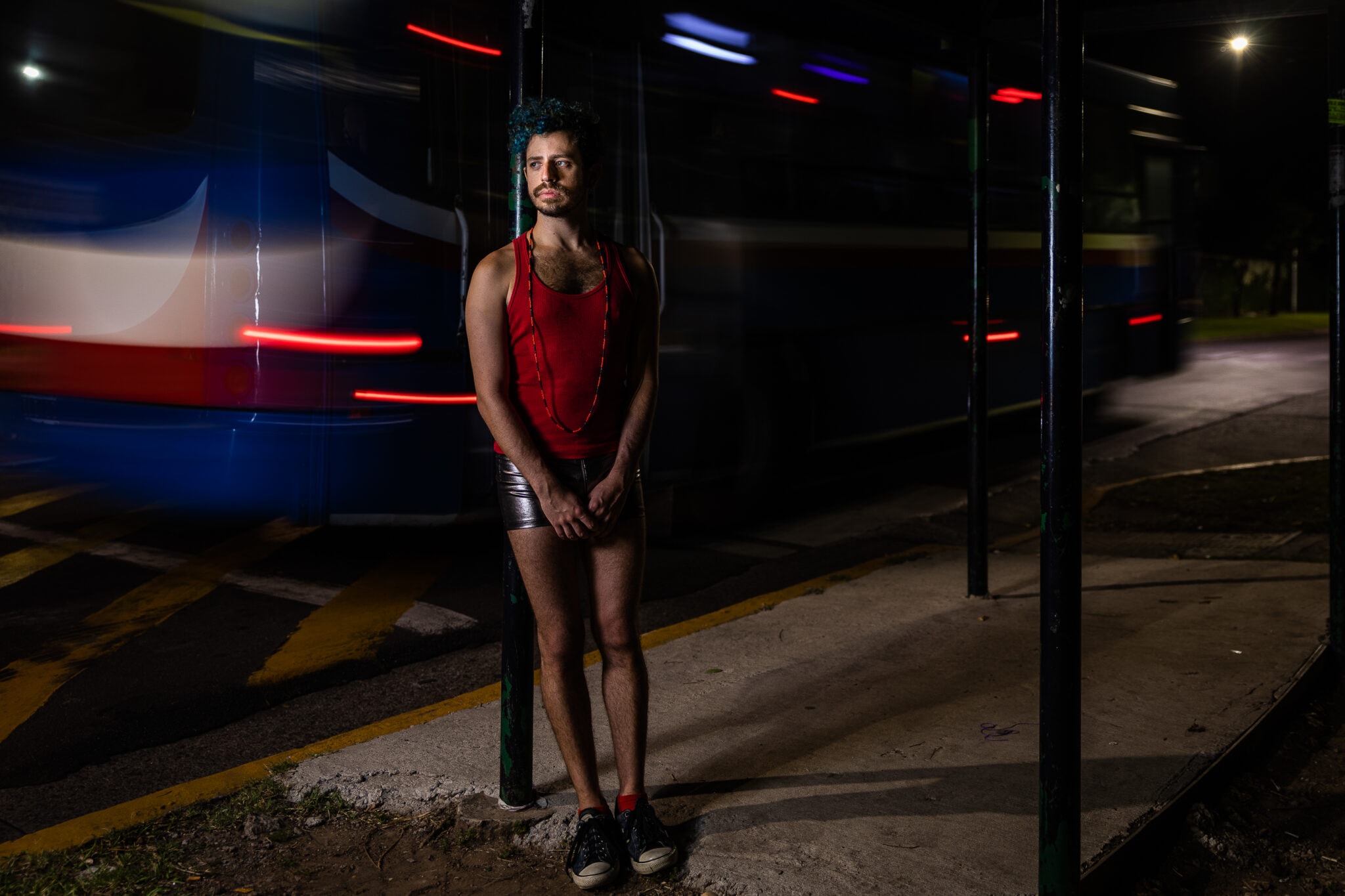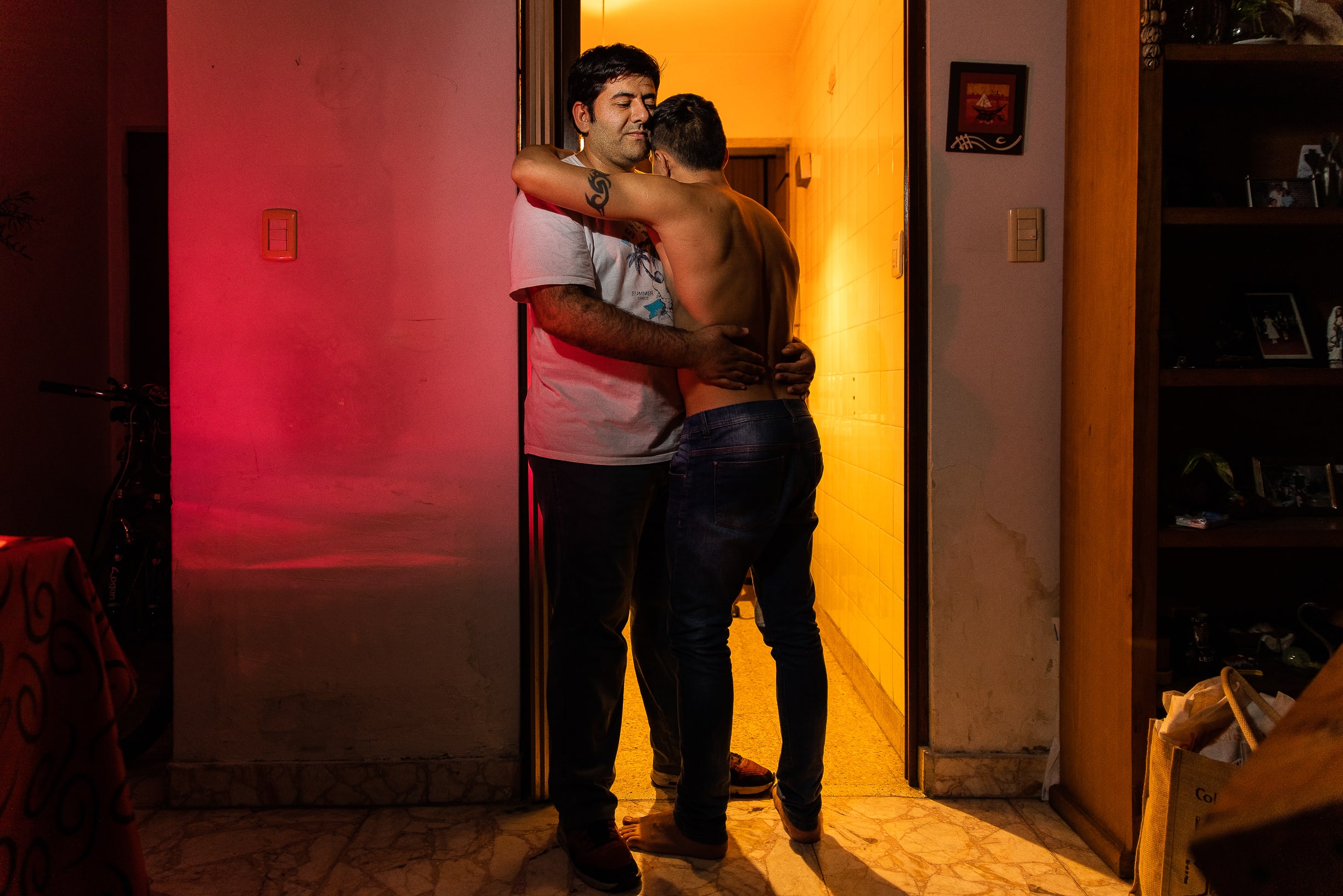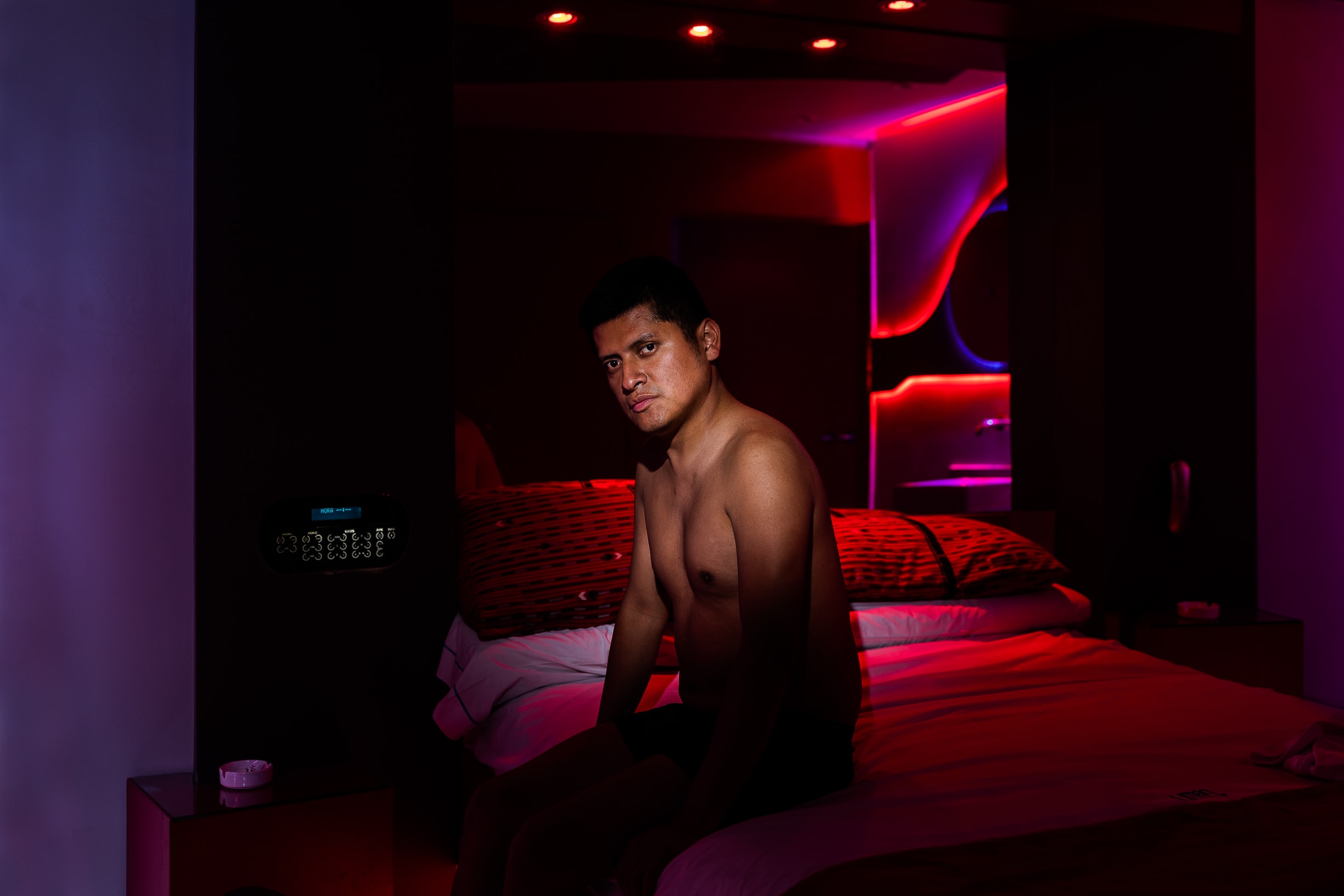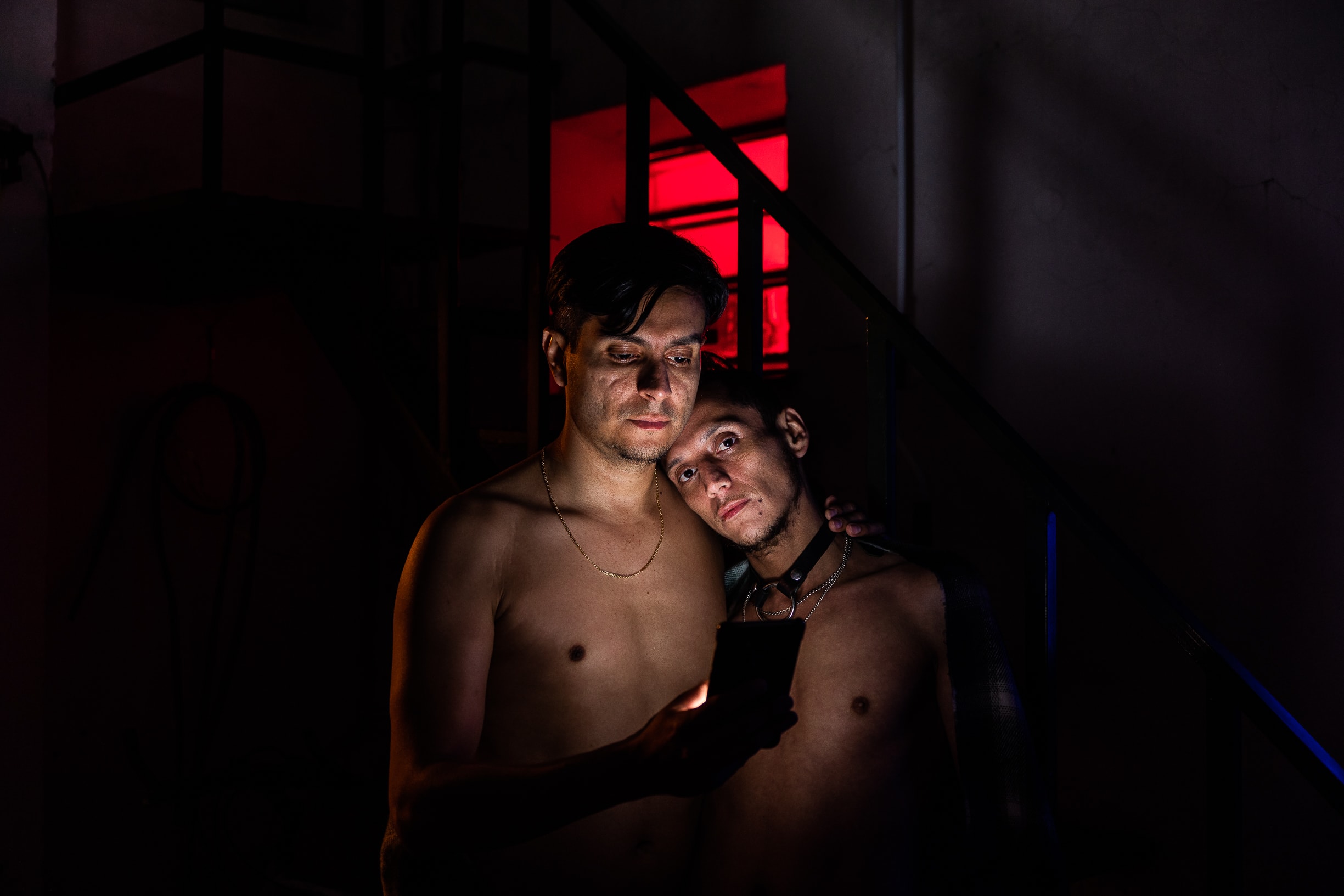
Telling me through others
Sometimes, when the mother of Peruvian photographer Macidiano Céspedes leaves the house, she leaves him a little note. She asks him to buy something, wishes him luck in something else, or tells him something she had not dared to tell him otherwise. She said, “You’ll have to get well, ” when he was sick.” He saves everything: “I like to keep it. I want to immortalize it,” he says.
Macidiano has been living in Argentina since 2004. Through the work in progress “Inmigración LGBT en Buenos Aires” (LGBT immigration in Buenos Aires), he tells (and discovers) his own story by portraying others.
Macidiano Céspedes
How did you start working with migration?
The first project I did while I was studying was about immigration. I remember that, in a class, a debate about politics started. I wasn’t raised that way; I’m not a fanatic of anything. When I see a problem, I try to look at it from the outside. I don’t get too involved in politics. But in that debate, they started to fight, and I calmed one of them down: “Hey, don’t fight, respect me.” And he answered me: “You don’t interfere. You give your opinion in your country”. It was repulsive.
My mother worked for a long time with my Italian grandparents. She took care of them. Here in the neighborhood, the lady in front is Portuguese. People always talk about when migrants came to Argentina and suffered discrimination: they said they came with lice. At that moment, I said: “ah well, I will talk about migration,” about those of yesterday and those of today. Before, the migration that was escaping from the World War, now it is the Latin American migration. I did that in a subject, and it was my first migration project.

Macidiano Céspedes

Macidiano Céspedes

And how was the project born?
I took a picture for a film, and a boy started to tell me: “I feel very comfortable here.” He was a very particular character, dark-skin, with orange hair. “In Buenos Aires, I can dress the way I want, and nobody will say anything to me in the street,” he told me. I started to be interested in what he said because I reflected on it myself. It was like I was talking to myself.
I get in contact with guys. First, I get together with them. We talk about similar stories: the difficulty of going to a hotel with another guy in their home countries or having a boyfriend and not being able to introduce him to the parents. I have a Colombian friend who has been in a couple for ten years, and he presented his boyfriend as a friend in Colombia.
I see how they tell me their story, and I think of the photo adapting it. Most of the spaces I use are interiors because I look for rooms where the person is inside, enclosed as if someone were spying. I think about not going out at all. I believe that as much as I tell the stories of these kids, they are my story too. I’m revealing something of mine through them.
How do you figure that out?
For example, I think I was able to tell my story to my family in Peru through this medium. A photo won a prize, there was a debate, and a journalist from a radio station said that the picture was “advocating homosexuality.” That speaks about the image: it is more about the one who looks at it, based on his preconceptions, his experiences. With that photo, I began to let go. Thanks to photography, I stopped being the gay of the family and became a photographer.
One day, I saw an advertisement of a little boy who naturally sees a girl and likes her. Then I told my mother: “You helped me write my first love letter when I was six years old.” It turns out that I liked a little classmate at school, we called each other by our last names and his was Aldea. When my mom helped me write the letter (“Aldea, I love you”), she never imagined it was for a boy. And I told her years later when I saw the advertisement. At first, it’s very natural. You start liking something, and you don’t differentiate; you are free.


